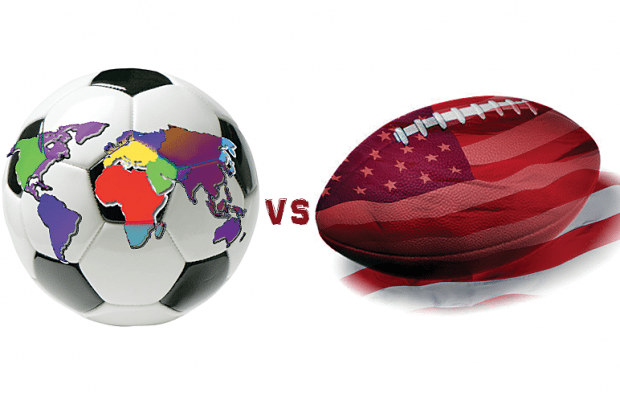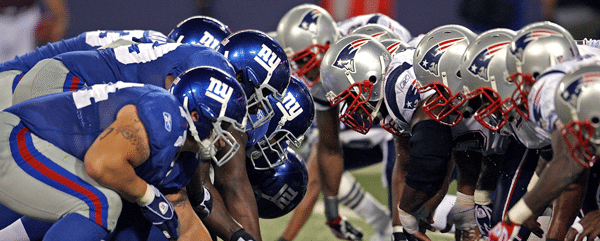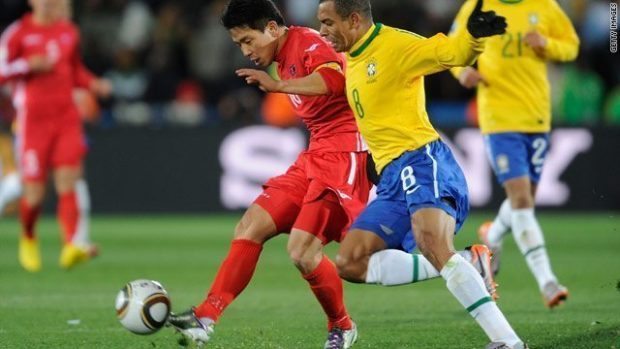The Soccer And Football Culture Wars: Why Can’t ‘Football’ Fans Get Along?

“My broad, all encompassing answer: It’s a culture clash.”
Article thanks to Brian Clarke & via www.football.com
The American football vs. international football discussion is so lame and really silly on both sides. At this point it’s no different from the jock (American football) vs. nerd (international football) paradigm that plays itself out in every high school across America. Except this dichotomy is played out in a much more immature time in life called adulthood and this tends more often than not to play out on the Internet, where rationale often takes a backseat to bombast.
At this point the narrative is pretty dry. Football fans think international football and its fans are too soft, while international football fans pretend that anyone who isn’t a fan of it is somehow a less sophisticated person for not enjoying it. It’s silly to compare the two sports other than the fact they both share the same name. However, I’ll propose an alternative solution that both sports can exist in this country in a prominent manner without actually being rivals. International football is growing in popularity in strong numbers in this country, but it has little chance to catch American football as the country’s number-one obsession. I can enjoy the World Cup and soccer and readily admit that there’s very little chance of me switching to the Premier League on Sunday in the fall. So while football fans arrogantly suggest changes to Americanize international football and their fans are all too happy to point out flaws in America’s sport culture, no change of the rules in either game will pull one crowd into the other.
That being said, there is a more interesting discussion about how and why this unique schism takes place between these two particular sports that have such an intense fan rivalry in the United States.
My broad, all encompassing answer: It’s a culture clash.
Football is America
Like no other sport, the NFL and football drapes itself in the flag and embraces the military aesthetic. It’s Americana, it’s apple pie, it’s suburban, it’s blue collar, it’s tough (faux and real), and brings with it the hyper-masculine rigidity unique to almost all sports. It’s also far more suburban and rural; and despite its best efforts the coasts don’t love football nearly as much as the Midwest and the South. The image of the stereotypical football fan conjures up an imagine of the real hardworking American that politicians use in stump speeches as means to reflect particularly conservative values. While this brings comfort to some, that feeling is often narrow-minded and exclusionary.
While there are a lot of characteristics that make football so successful in this country, there are some glaring weaknesses.
Football isn’t cosmopolitan, it struggles with progress when it comes to diversity (not just talking race here either) and gives off an arrogance and machismo that is very much a reflection of the stereotypical “Amurikuhn” culture (for some that’s awesome, for others not so much). Football is represented by what I would suggest is a wholly unique jingoist ethos that American soccer fans will always be forced to endure no matter how popular the MLS or the World Cup may be.
Worldwide Sport of Choice
On the other hand, international football is the international sport of choice. The only sport even remotely in the same sphere internationally is basketball and, to be honest, that gulf isn’t even close. It’s incredibly diverse ethnically, racially and in language.
In America, soccer is much more popular in urban areas, far more diverse and in many ways embodies a cultural progressivism that football simply does not. When most think of international football in this country, the image is something more like the soft, soccer mom handing out participation ribbons for every player no matter what skill. Trophies and apple slices for all! The game itself is more prone to freestyle and lends itself to more expression than football. However, the lack of scoring and reputation for embellishment takes away from the artistry in a way.
Yes, culturally, international football does drape itself in a flag, but it is in no way limited to just an American flag, which can be off-putting to some. The xenophobia and overt racism towards black players is well documented. International football feels as though it is borrowed passion for many Americans. The stereotypical international football fan does not resemble your average football fan. International football has become the fan of the hipster; the condescending, snobby, patronizing caricature of a hipster who believes the lack of appreciation for international football comes from a lack of sophistication and worldliness rather than a matter of preference. One would be hard pressed to find the diehard international football fan and the obsessed football fan running in the same circles outside of sports fandom. The arrogance and resentment by the international football fan about the world’s sport further widens the gulf between the two sports.
I think when it comes right down to it the gap between the two sports has less to do with the sports themselves but by the subcultures created by them. It’s a cultural divide that (much like our politicians) breeds insufferable attitudes on both sides.
I’m excited to see where the rivalry goes, but please put down your weapons and try to enjoy the beauty of both sports. Reach across the field (or pitch?) and make a friend. It’s better that way, I promise.

